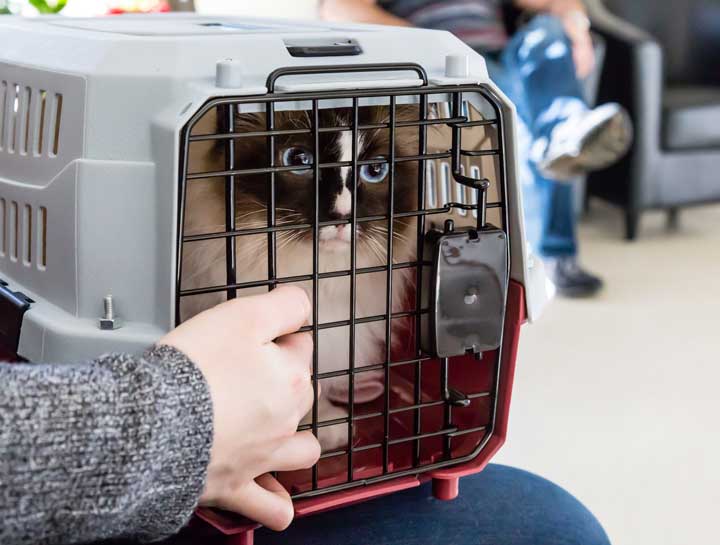How to Habituate Your Cat to a Carrier

Use this step-by-step guide to help your cat adjust to a cat carrier for her trip to the doctor.
- Cat, meet the carrier
Place the carrier in a cat-friendly area and leave it open, so your curious kitty can check it out when she's ready.
- Draw the kitty close with food
Start by placing the food bowl near the carrier. If she's too shy to snack close to the carrier, move it as far away as necessary to get her to eat.
Quick tip: Add a special, tasty treat, such as a bite of canned tuna or chicken, to lure your kitty close.
Once your cat regularly eats from the bowl, begin moving the bowl closer and closer each day until she will chow down happily next to the carrier.
- Create a dining car
When your cat comfortably dines next to the carrier regularly, she's ready to dine inside the carrier, that is. Place the food bowl directly inside the carrier entrance so she can pop her head inside for a quick snack.
Quick tip: Never close the door on your cat. If you need to, you can prop it open and wire it if necessary –just make sure it won't accidentally fall shut on the cat and startle her.
- Customize your kitty's cave
Place toys and treats in the carrier occasionally so your curious kitty discovers them there. You might try these fun options, depending on your cat's personal preferences: Spaying a synthetic feline facial pheromone in the carrier occasionally may also help.
Note: Never lure your kitty into the carrier and close the door for a trip to the veterinarian. You'll lose the progress you've made—and your cat's trust—and she'll fear the carrier more.
- Stuffed mice
- Catnip toys
- Feather toys
- Cat grass
- Move dinner inside the carrier
When your kitty comfortably dines with her head inside the carrier for several days, you're ready to move the food dish further inside the carrier—a few inches every day until she steps completely into the carrier to eat.
- Watch and wait
This might be the toughest step because you need patience. It may take several weeks or months, depending on your cat, but you should start to find your kitty lounging in the carrier sometimes and resting there.
- Shut the door
Once the kitty's comfortable in the carrier, you can start to close the carrier door for a few seconds at a time with your cat inside. If your cat ever acts distressed with the door closed, release her immediately. And next time you close the door, only close it for as long as she tolerated the door being closed on a previous session. When you can keep the door closed for long periods of time, you're ready to practice car rides with your cat. Remember, many cats only associate their carrier with a trip to the veterinarian. So your goal is to change your kitty's associations with the carrier and car rides to fun things and special food treat instead of terror and trauma.
Quick tip: Once you find your cat regularly spends time resting, playing, and eating in the crate, then on the day you need to take her to the veterinarian, simply close the door and off you go. When you return home, be sure to continue offering food and fun in the crate. As long as more good things happen in the crate than scary things, it should always be easy to take the cat to the veterinarian when necessary.
